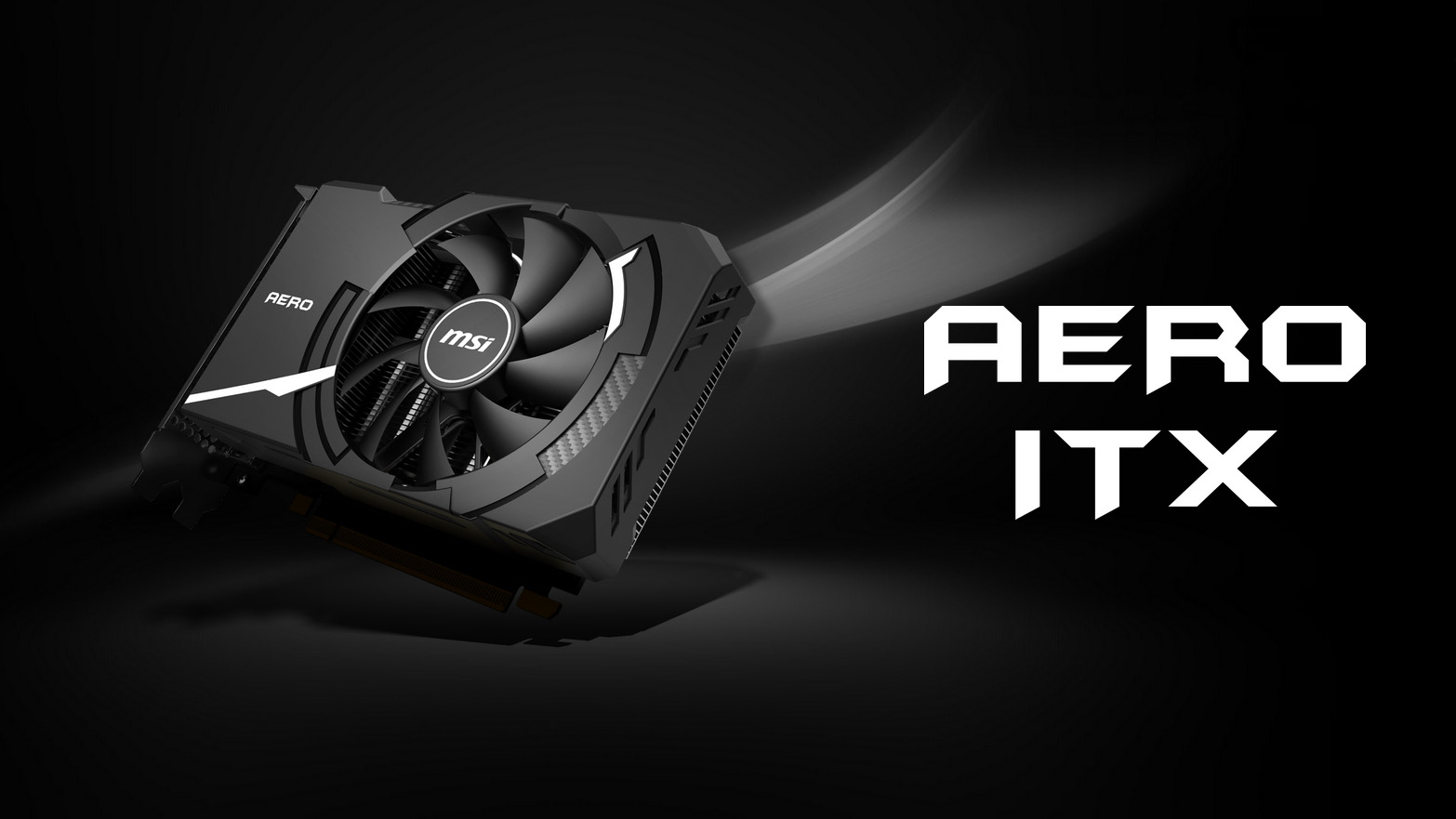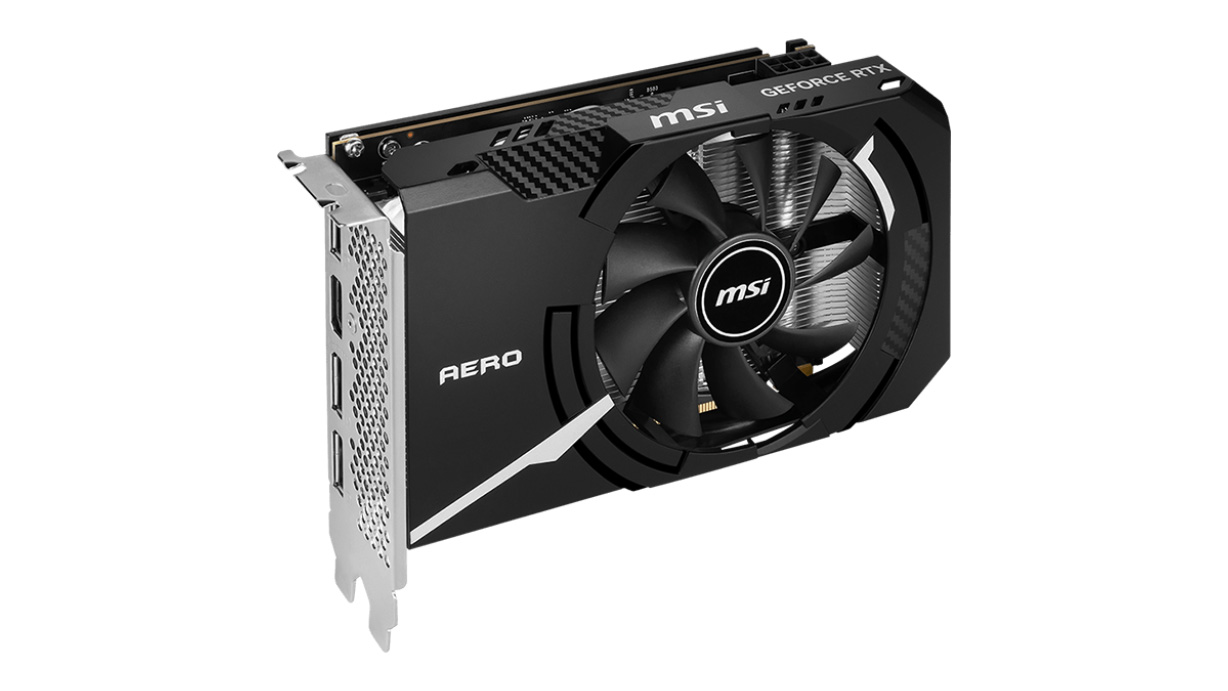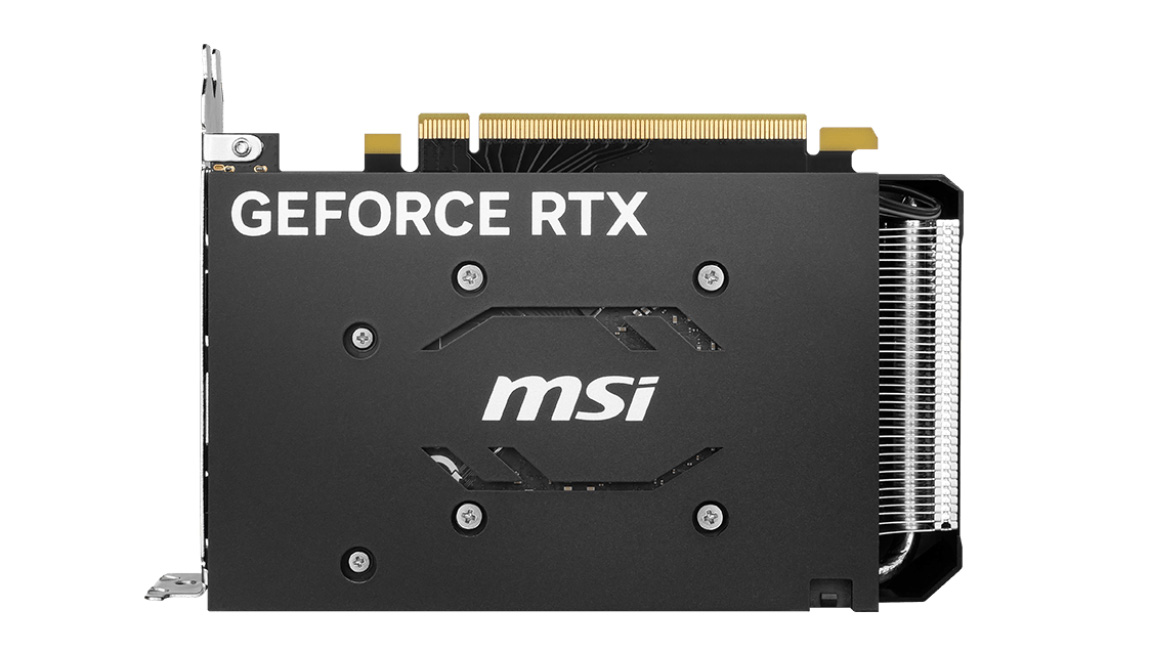
As @momomo_us on X (Twitter) spotted, MSI has created a new Mini-ITX version of the GeForce RTX 4060, one of the best graphics cards, dubbed the RTX 4060 Aero ITX 8G. The new model has a compact cooler design measuring just 167mm or 6.5 inches. Availability and pricing are unknown, but expect this card to be priced around the RTX 4060's $299 MSRP.
With a power consumption rating of just 115W, it's no surprise that MSI created a Mini ITX version of the RTX 4060. MSI's new card sports an all-black theme, accompanied by white and carbon fiber accents on the card's shroud. Cooling-wise, the card has a single fan that dissipates heat through an aluminum heatsink paired with 6mm copper heat pipes. On the back, there is a metal backplate covering the rear PCB.
There are two RTX 4060 Aero ITX versions: a standard variant with stock GPU clock speeds and a factory overclock. The OC variant comes with a boost clock of 2,490 MHz but can be boosted up to 2,505 MHz via an extreme performance profile that can be applied in the MSI Center Windows app.
Like all other RTX 4060 models, the Aero ITX's power consumption is up to 115W. A PCIe 8-pin connector provides supplementary power. Display outputs include three DisplayPort 1.4a connectors and a single HDMI 2.1a connector.


MSI's new compact RTX 4060 is an excellent alternative to the bigger dual-fan and even triple-fan RTX 4060s on the market. At 115W, the RTX 4060 does not need a lot of cooling capacity to reach its advertised performance levels, making the Aero's compact single-fan cooler a good combination for the RTX 4060.
The Aero's small size will serve well for system builders looking to build highly compact gaming systems, upgrade an older system with a new GPU, or for users who want a compact graphics card. The compact nature of the Aero card will allow it to fit in many older systems, making it a great upgrade path for older machines. On top of this, the RTX 4060's low power requirements will allow it to run on lower-end power supplies without a problem.
MSI's new card will also serve well for users who don't want to deal with the annoyances of really beefy graphics cards, even if they have the space for it. Not too long ago, cards like the Aero ITX were the default form factor for most (if not all) entry-level and mid-range graphics cards. It wasn't until the RTX 30 series that graphics card sizes got out of control. A compact card will enable better accessibility to certain parts of a motherboard, like secondary PCIe slots, M.2 storage slots, and even SATA connectors.







